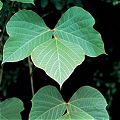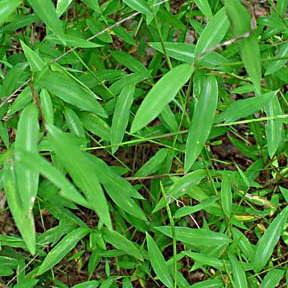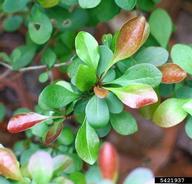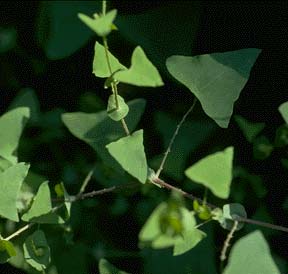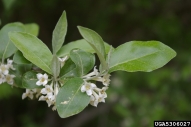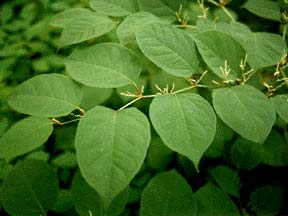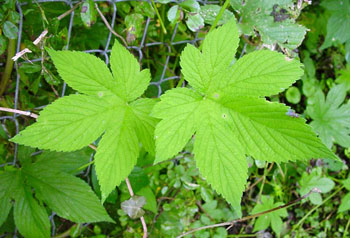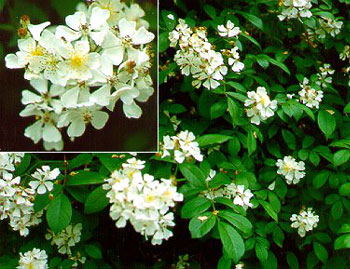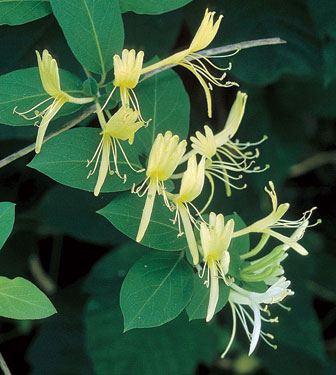
|
Invasive Management Area
|
|
|
The Invasive Management Area (IMA) program is a volunteer-led pilot project of the Fairfax County Park Authority to reduce invasive alien plants on our parklands.
Invasives were brought here from other continents, whether intentionally or accidentally. Having left behind the diseases and herbivores that kept them under control, in many cases they are able to spread rapidly into the wild and crowd out native species. The ten primary IMA target species are English Ivy (Hedera helix), Japanese Stiltgrass (Microstegium vimineum), Mile-A-Minute (Polygonum perfoliatum), Japanese Barberry (Berberis thunbergii), Winged Euonymus (Euonymus alatus), Oriental Bittersweet (Celastrus orbiculatus), Autumn Olive (Eleaganus umbellata) , Garlic Mustard (Alliaria petiolata), Porcelainberry (Ampelopsis brevipedunculata), and Kudzu (Pueraria lobata). These are just a few of the long, sad list of invasive alien species threatening our natural areas. "Klub Kudzu" is what we call the Friends of Accotink Creek volunteer coordination of IMA invasive alien species removal at two spots along Accotink Creek, in Americana Park and Lake Accotink Park. Other IMA spots in our watershed include Kings Park, Nottoway Park, Annandale Park, Springfield Forest, Canterbury Woods, Dunn Loring Park, Borge Street Park, Pine Ridge Park, and Rutherford Park. See map below. Join us in ridding our watershed of these alien plant pests. Volunteer with Team Accotink at one of our sites by signing up for "Klub Kudzu" workdays and other scheduled opportunities on the Friends of Accotink Creek calendar. Let's all help eliminate the sources of invasive alien plants by banning them from our gardens and informing our neighbors and plant suppliers of the dangers. Plant NOVA Natives is a great resource for native plant gardening. Learn more about IMA at www.fairfaxcounty.gov/parks/resources/ima/. Learn more about invasive alien species at www.invasiveplantatlas.org/index.html. Invasive Management Locations in Accotink Creek Watershed
The Weed Wrench can be effective at removing Kudzu tubers. Lengthier tubers may require repositioning the jaws lower and lower to extract the tuber bit by bit. (We later learned the secret of avoiding this back-breaking task - these huge tubers will die in the ground if cut just below the crown - much simpler!)

This Kudzu tuber is 12 feet long and the attached vines are 70 feet.
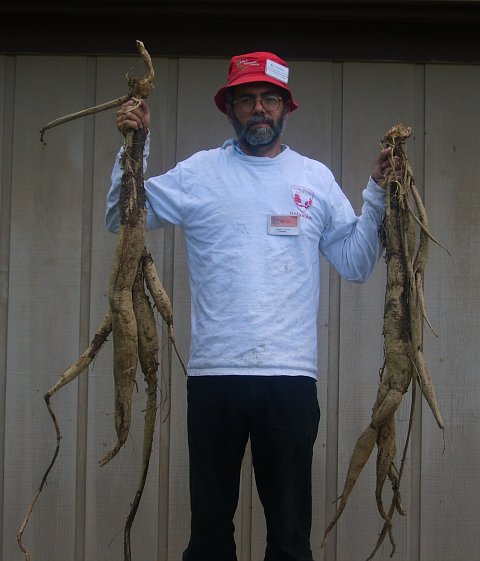
More large Kudzu tubers extracted with the Weed Wrench

Volunteers display extracted Kudzu tubers and vines. |


